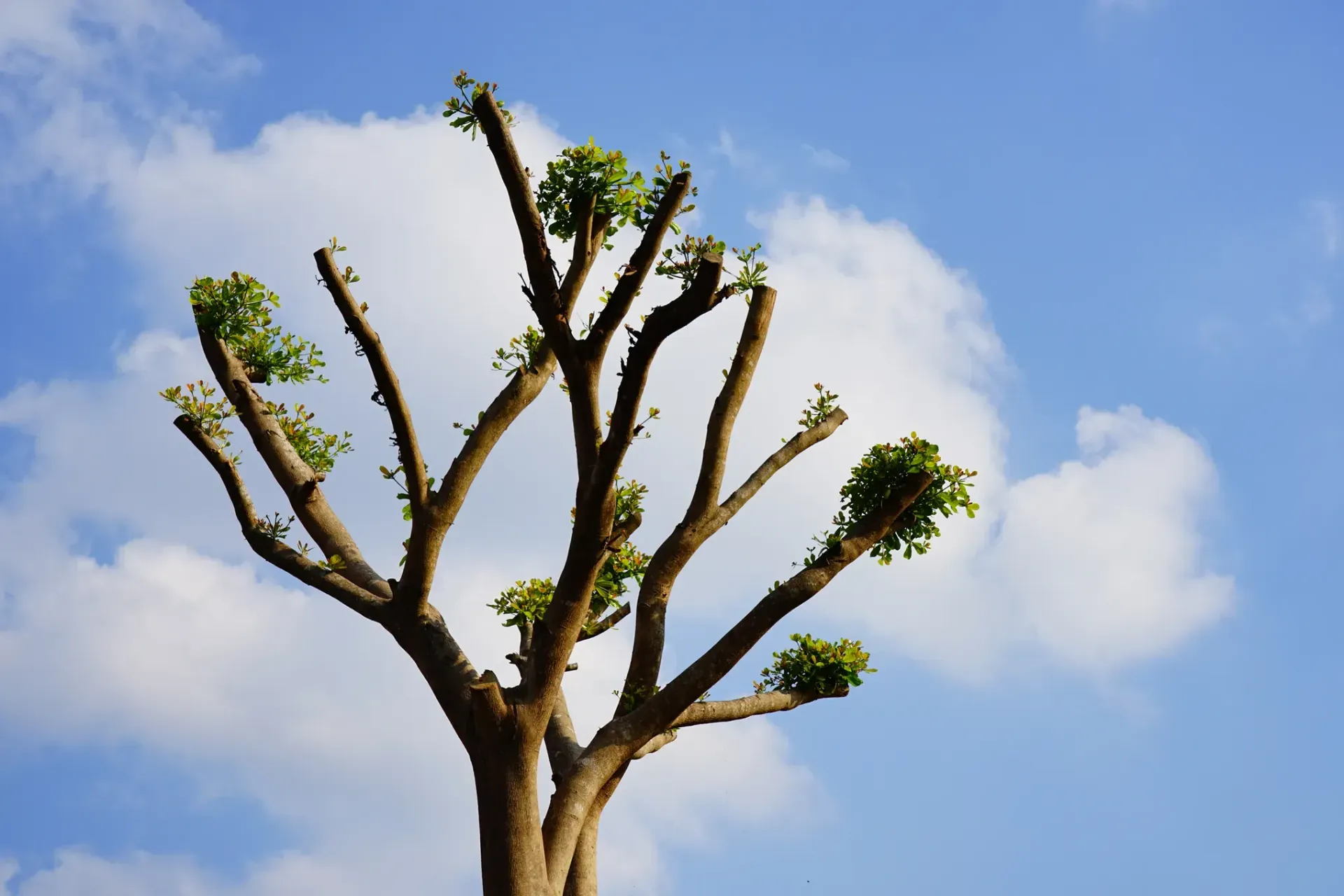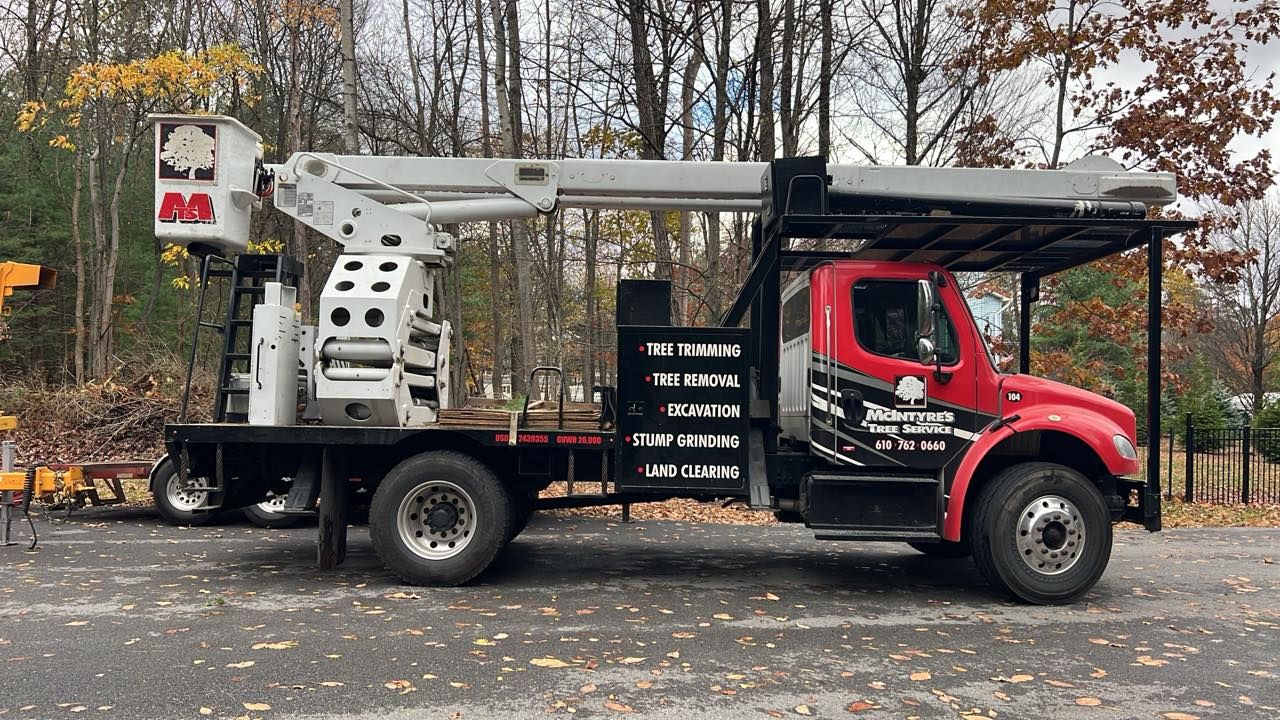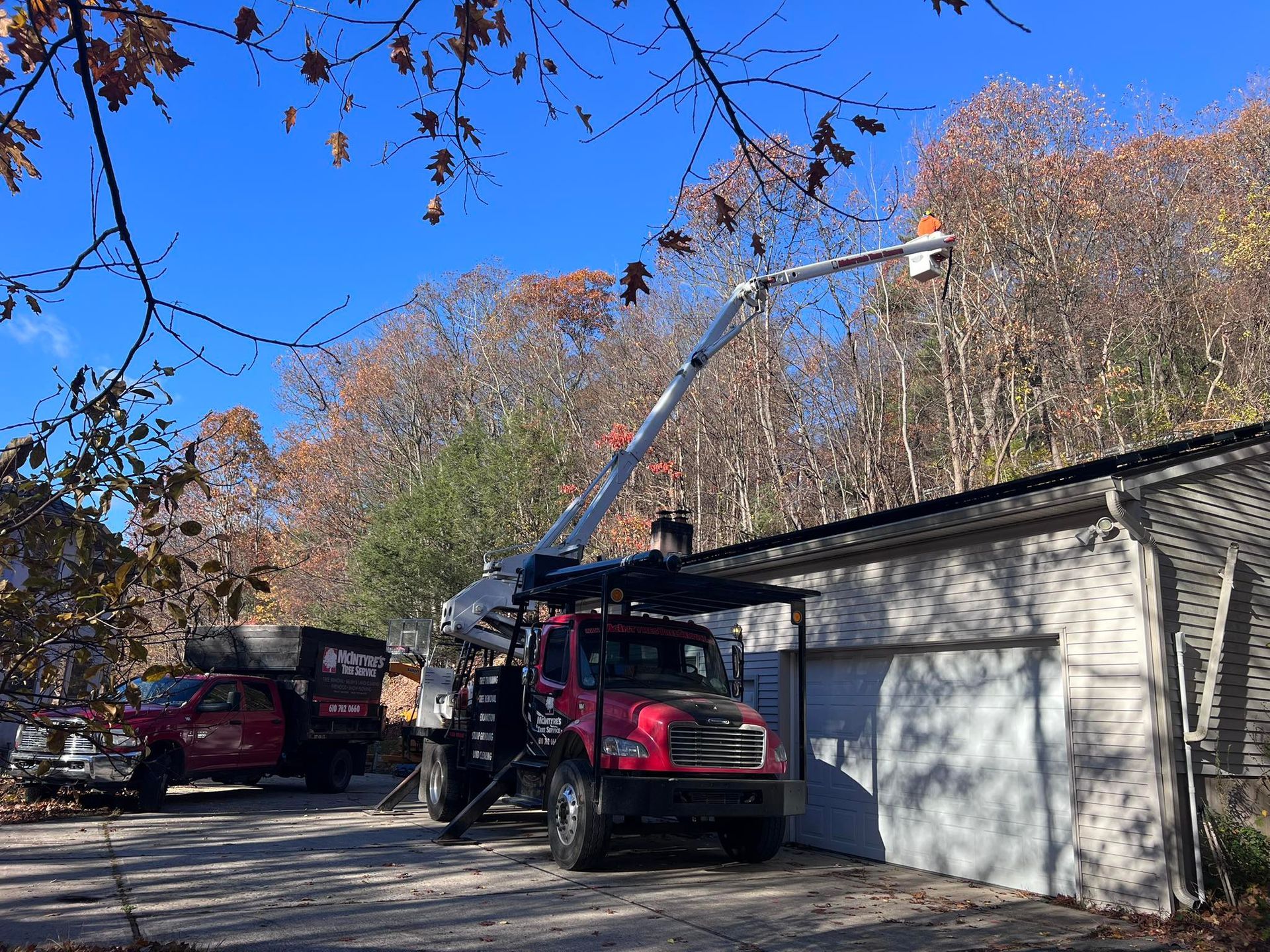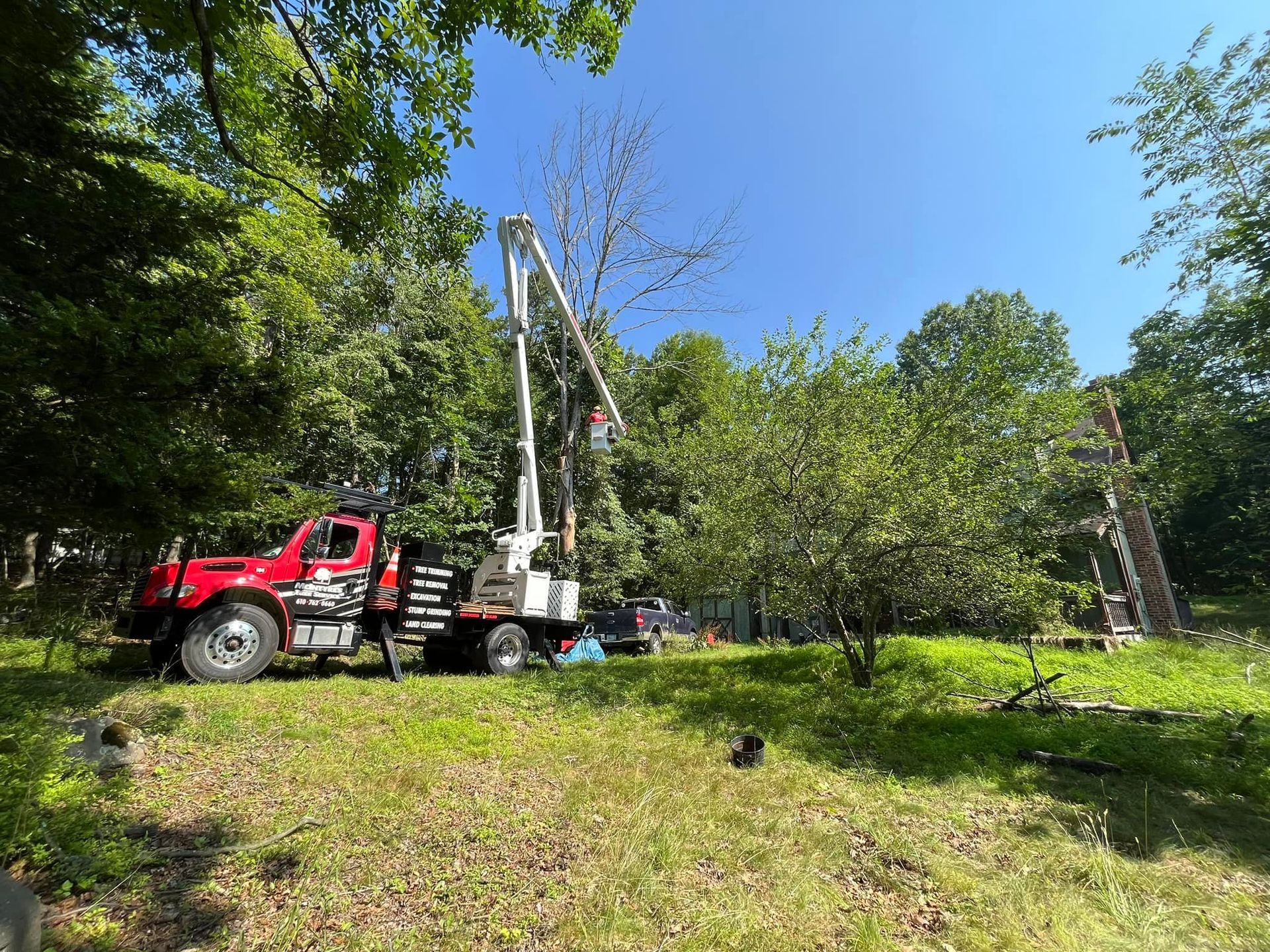Tree Topping vs. Tree Pruning: What’s the Difference and Why It Matters

When it comes to caring for the trees in your yard, it’s easy to get confused between different techniques. One of the most common questions we hear at Mcintyre’s Tree Service is: “What’s the difference between tree topping and tree pruning?”
At first glance, both might seem like simple ways to trim a tree — but the truth is, they’re very different. And choosing the wrong one can lead to long-term damage, or even cause your tree to die prematurely.
In this blog, we’re going to break down the key differences between
tree topping and
tree pruning, the pros and cons of each, and how to make the best decision for your tree’s health and safety.
What Is Tree Topping?
Let’s start with tree topping, because it’s often misunderstood — and misused. Tree topping is the practice of cutting back large sections of the upper canopy, often removing the tree’s central leader and upper branches to reduce height.
People often request tree topping services when a tree seems too tall, too close to a house, or they’re worried it could fall during a storm. On the surface, it might seem like a quick fix.
But here’s the thing — tree topping is generally considered harmful by arborists and tree care professionals. It can:
- Stress the tree severely, as it loses a large portion of its foliage (which is vital for photosynthesis).
- Encourage weak, rapid regrowth, leading to unstable branches that are more likely to break.
- Expose the tree to disease and decay, since the large wounds don’t heal easily.
In most cases, we do
not recommend
tree topping services — except in very specific scenarios, such as emergency storm damage or when a tree poses an immediate hazard and no other option is available.
What Is Tree Pruning?
Now, let’s talk about tree pruning — a much more refined and strategic approach to tree care.
Tree pruning involves selectively removing branches to improve a tree’s structure, health, and appearance. Instead of cutting large sections at random, pruning focuses on:
- Removing dead, damaged, or diseased limbs
- Thinning overcrowded areas to allow more sunlight and airflow
- Shaping the tree to maintain a balanced, natural form
- Reducing the risk of falling limbs in high-traffic areas
Unlike topping, tree pruning supports the long-term health of the tree. It’s done with purpose and precision — and ideally, by someone who understands tree biology.
When done correctly (and at the right time of year), pruning helps a tree grow stronger, stay healthier, and live longer.
Tree Topping vs. Tree Pruning: A Side-by-Side Comparison
| Feature | Tree Topping | Tree Pruning |
|---|---|---|
| Purpose | Reduce height or size quickly | Improve structure and health |
| Method | Cut large branches to stubs | Selective trimming of specific branches |
| Impact on Tree Health | Damaging and stressful | Supports long-term health and growth |
| Risk of Decay or Disease | High | Low, when done properly |
| Regrowth | Weak and unstable | Strong and well-structured |
| Best Use Case | Emergency or last resort | Routine tree maintenance |
Why Tree Topping Can Be Dangerous
Let’s take a closer look at why tree topping services can be so problematic.
1. Weak Regrowth
After topping, trees try to recover by pushing out a flush of fast-growing shoots. These are often poorly attached and prone to snapping in wind or rain — which increases the danger rather than reducing it.
2. Vulnerability to Pests and Disease
Large cuts made during topping leave the tree vulnerable to decay fungi, insects, and disease. Unlike smaller, well-placed pruning cuts, these wounds don’t heal quickly — and can cause irreversible damage.
3. Reduced Lifespan
Repeated topping can shorten a tree’s life significantly. What starts as a height-control measure often leads to decline, dieback, and eventual removal.
The Right Way to Handle Overgrown Trees
If you have a tree that’s grown taller or wider than expected, don’t panic — there are smarter options than topping.
Professional tree pruning can:
- Safely reduce weight and density in the canopy
- Redirect growth away from structures or power lines
- Restore balance and improve structural integrity
Sometimes,
tree maintenance also involves cabling, bracing, or gradual height reduction through proper pruning over time. These methods are safe, sustainable, and far better for your tree than topping.
Real-World Example: When Pruning Saved a Century-Old Oak
Not long ago, one of our clients in Pennsylvania called about a massive oak tree that was crowding their home’s roof. They were ready to top it — thinking it would solve the problem.
Instead, we suggested a deep tree pruning approach. By selectively removing certain limbs, we opened up the canopy, reduced the weight on the house-facing side, and restored airflow. The tree looks stunning now, and the homeowner feels much safer.
Had we topped that tree, it likely would have gone into shock or started declining. Instead, it’s thriving
When Should You Call a Professional?
Here’s the truth: every tree is different, and what works for one may not work for another. The key is to evaluate your tree’s health, species, age, and location before making any big decisions.
A certified arborist or experienced tree care provider — like our team at
Mcintyre’s Tree Service — can assess your tree and recommend the safest, most effective course of action
Quick Tips for Better Tree Maintenance
To keep your trees healthy and safe year-round, here are a few quick tips:
- Schedule regular
tree pruning every 2–3 years (or as needed for fast-growing species)
- Watch for signs of disease, pest damage, or dead limbs
- Avoid DIY topping or heavy cuts without a proper plan
- Hire a licensed professional for any large or risky work
Choose Pruning, Not Topping
At the end of the day, the choice between tree topping and tree pruning isn’t just about aesthetics — it’s about preserving your trees’ health, longevity, and safety. While topping might offer a quick fix, it comes with serious risks. Pruning, on the other hand, is a thoughtful, effective way to care for your trees the right way.
If you’re unsure what your tree needs, we’re here to help.
Mcintyre’s Tree Service has years of experience in safe, sustainable tree maintenance, including expert tree pruning and evaluations for high-risk trees. Whether you’re dealing with storm damage, overgrown limbs, or just need seasonal care, our team has you covered. Call us at 610-762-0660 or email us at mcintyrestreeservice@gmail.com to learn more.
We’re proud to help families create cleaner, healthier, and more beautiful outdoor spaces.
Frequently Asked Questions
1. What are tree topping services and when are they used?
Tree topping services involve cutting back large branches or the top portion of a tree to reduce its height or size. While it might seem like a quick solution for overgrown trees, it’s generally not recommended because it can cause stress, weak regrowth, and increased risk of disease. These services should only be used as a last resort in emergencies or when a tree poses an immediate safety hazard.
2. How is tree pruning different from tree topping?
Tree pruning is a selective and strategic process that removes specific branches to improve a tree’s structure, health, and appearance. Unlike tree topping, which involves drastic cuts, pruning focuses on maintaining the tree’s natural form while eliminating dead, diseased, or overgrown limbs. Proper tree pruning encourages healthy growth and strengthens the tree over time.
3. Why is regular tree maintenance important for my landscape?
Consistent tree maintenance helps preserve the health and safety of your trees and the surrounding property. It includes services like tree pruning, disease inspection, and structural assessments. Well-maintained trees are less likely to drop dangerous limbs, develop decay, or become a liability during storms, making regular care a smart long-term investment
4. Can tree pruning help prevent storm damage?
Yes, professional tree pruning can significantly reduce the risk of storm damage by removing weak, dead, or overextended branches. It also improves air circulation and structural balance, making the tree more resilient in high winds. As part of your overall tree maintenance strategy, pruning can protect both your property and the health of your trees.
5. Who should I contact for tree topping or pruning in my area?
If you're considering tree topping services, tree pruning, or any form of tree maintenance, it's essential to work with a certified professional. At Mcintyre’s Tree Service, we offer expert advice and safe, reliable care for all types of trees.



